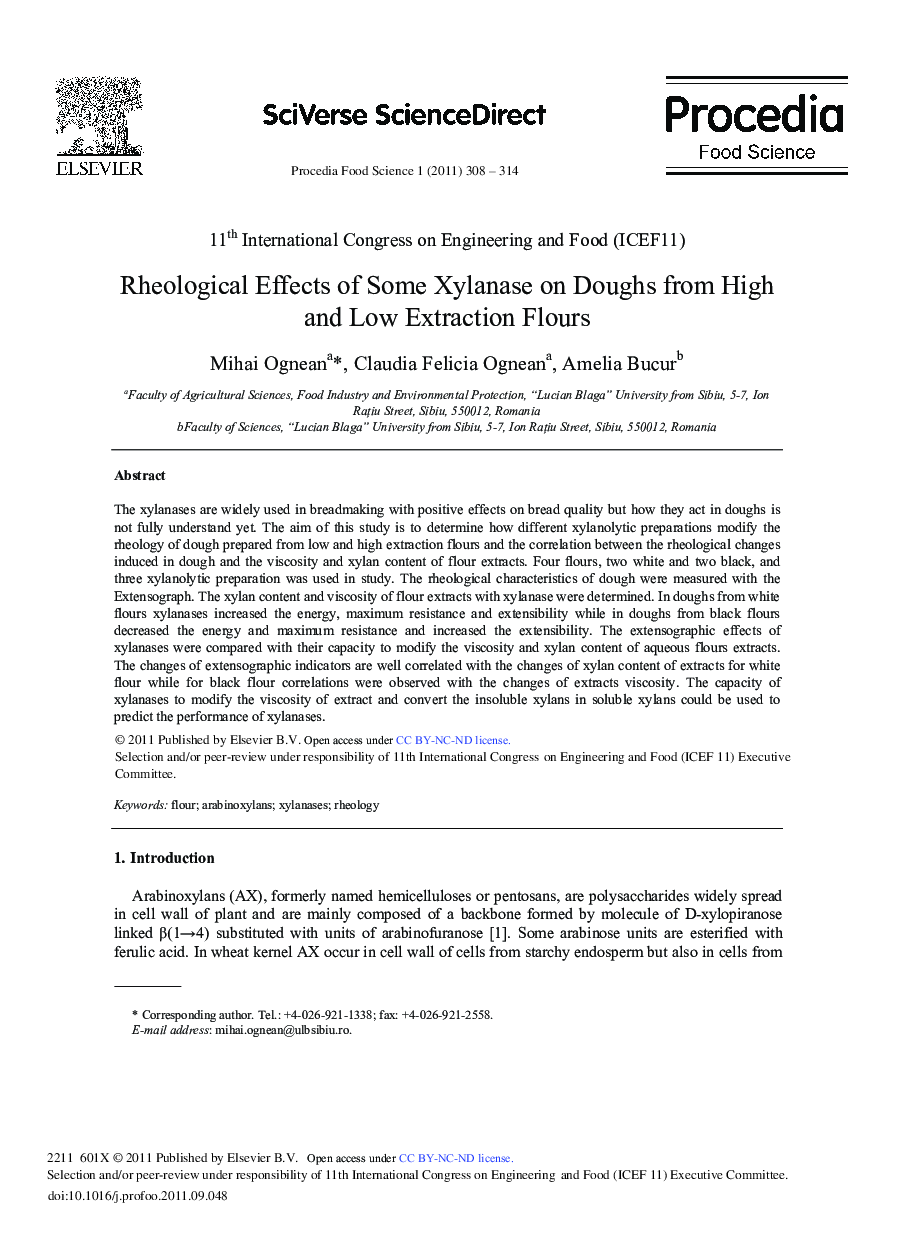| Article ID | Journal | Published Year | Pages | File Type |
|---|---|---|---|---|
| 1264956 | Procedia Food Science | 2011 | 7 Pages |
The xylanases are widely used in breadmaking with positive effects on bread quality but how they act in doughs is not fully understand yet. The aim of this study is to determine how different xylanolytic preparations modify the rheology of dough prepared from low and high extraction flours and the correlation between the rheological changes induced in dough and the viscosity and xylan content of flour extracts. Four flours, two white and two black, and three xylanolytic preparation was used in study. The rheological characteristics of dough were measured with the Extensograph. The xylan content and viscosity of flour extracts with xylanase were determined. In doughs from white flours xylanases increased the energy, maximum resistance and extensibility while in doughs from black flours decreased the energy and maximum resistance and increased the extensibility. The extensographic effects of xylanases were compared with their capacity to modify the viscosity and xylan content of aqueous flours extracts. The changes of extensographic indicators are well correlated with the changes of xylan content of extracts for white flour while for black flour correlations were observed with the changes of extracts viscosity. The capacity of xylanases to modify the viscosity of extract and convert the insoluble xylans in soluble xylans could be used to predict the performance of xylanases.
